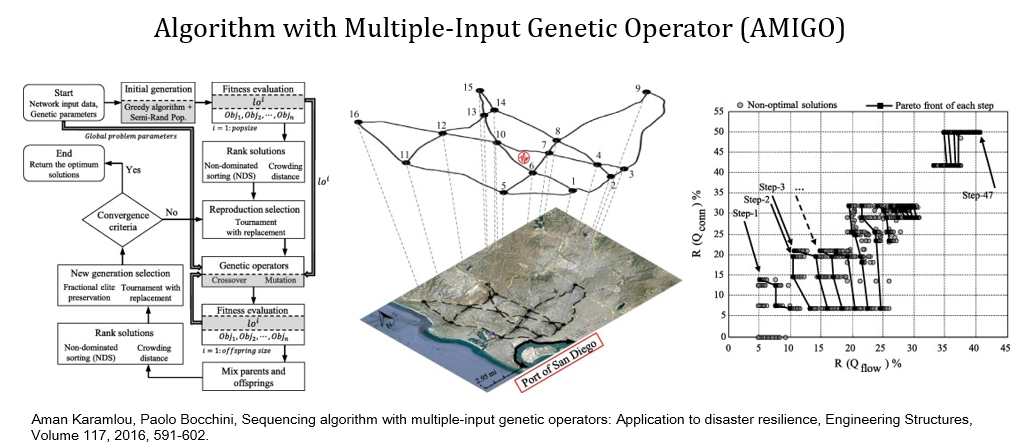Resilience Analysis of Transportation System
Transportation networks are the fundamental critical infrastructure for mobility of people and goods in our daily life. After an extrem event, transportation system serves as the primary conduit for rescue, recovery, and reconstruction. Recent extreme events have vavidly demonstrated the importance and vulnerability of transportation system and the other infrastructure systems.
The resilience of the transportation network should be determined from component-level up to system-level. The resilience of transportation network can be enhanced through pre-event retrofit and post-event restoration. Retrofit processes during regular maintenances and the restoration of damaged structures after an extreme event should be carefully optimized to maximize resilience and functionality of the transportation network within limited budget and resources.
To conduct resilience analysis of tranprotation system after earthquake, AMIGO (Algorithm with Multiple-Input Genetic Operators) has been developed to optimize restoration scheduling of a large network. Read more: Sequencing algorithm with multiple-input genetic operators: application to disaster resilience. Engineering Structures, 117(C), 591 - 602, 2016.

To account for uncertainties in restoration and decision processes, a simulation-based technique has been proposed to determine probabilistic restoration function of individual damaged bridges. It is applied to a multispan simply supported (MSSS) steel girder bridge after an earthquake. Read more: From component damage to system-level probabilistic restoration functions for a damaged bridge. Journal of Infrastructure Systems, 2016, DOI: 10.1061/(ASCE)IS.1943-555X.0000342.